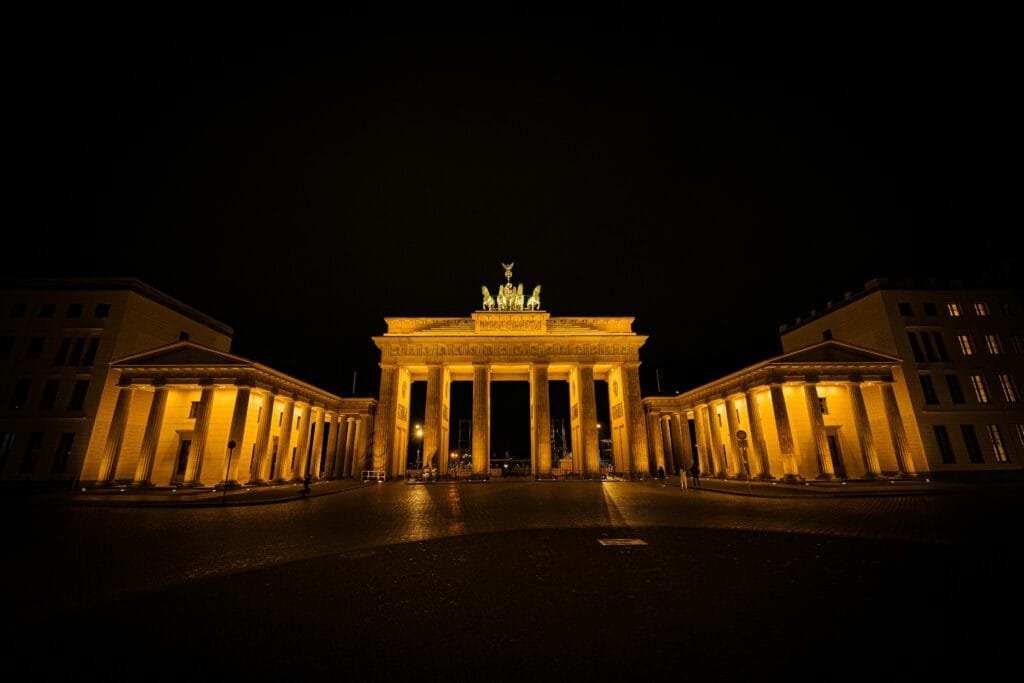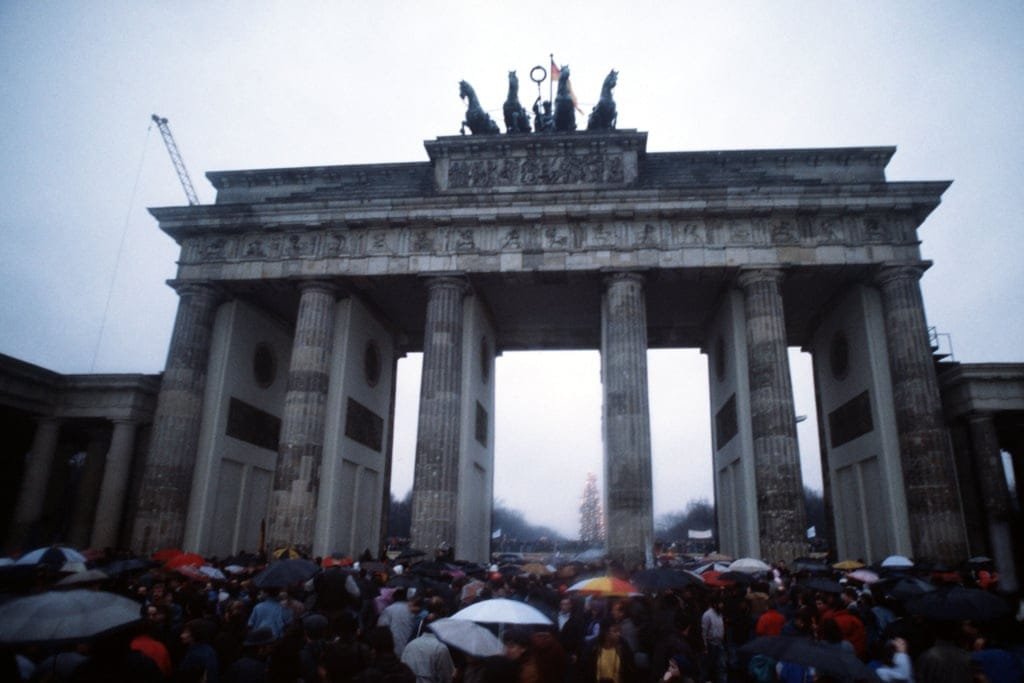Berlin’s Brandenburg Gate is more than just a historic landmark; it’s a symbol of unity, resilience, and cultural identity. Standing tall in the heart of the city, this neoclassical monument has witnessed pivotal moments in history, from Prussian glory to the Cold War and beyond. Its grandeur and historical significance make it a must-visit destination for travelers worldwide.
Introduction to Brandenburg Gate

Imagine walking through a gate that has stood as a silent witness to revolutions, wars, and reunifications. That’s exactly what you’ll experience at the Brandenburg Gate. Built in the late 18th century, this architectural masterpiece symbolizes peace and freedom. It’s not just a monument but a bridge connecting Germany’s tumultuous past with its hopeful present.
Today, it stands as one of the most iconic symbols of Berlin and Germany at large. Whether it’s your first visit to the capital or your tenth, the Brandenburg Gate captivates with its beauty and historical gravity.
Historical Background
The Brandenburg Gate’s story begins in 1788 when Prussian King Frederick William II ordered its construction. Architect Carl Gotthard Langhans designed the Brandenburg Gate, drawing inspiration from the Propylaea, the grand gateway to the Acropolis in Athens. He completed it in 1791, originally naming it the “Gate of Peace” to symbolize harmony.
In the years following its construction, the gate became a focal point for military parades and celebrations of the Prussian state’s growing power. Its design—marked by six Doric columns and a stately Quadriga statue atop the structure—reflects both its classical inspiration and its role as a grand ceremonial entrance.
The Quadriga, a chariot drawn by four horses, steers by Eirene, the goddess of peace, reinforcing the gate’s original message of tranquility. However, the gate’s history would take many dramatic turns in the centuries that followed.
Significance During Historical Events
The Brandenburg Gate has been a backdrop for some of the most defining moments in European history. During Napoleon’s invasion of Berlin in 1806, the French emperor famously looted the Quadriga and transported it to Paris. After Napoleon’s defeat in 1814, the statue returned to Berlin, cementing its status as a symbol of German resilience.
Later, under the German Empire, the gate became a representation of national pride. The Nazi regime rose around it, using the gate as a propaganda tool, draping it in swastikas and surrounding it with parading soldiers. World War II left the gate severely damaged, yet it endured as a symbol of the country’s survival through adversity.
Brandenburg Gate and the Berlin Wall
The gate’s most poignant chapter came during the Cold War. Located in the no-man’s-land between East and West Berlin, the Brandenburg Gate became an emblem of division. The Berlin Wall, constructed in 1961, ran directly in front of the gate, cutting it off from public access and turning it into a silent observer of the city’s separation.
For decades, it stood as a stark reminder of Germany’s division. However, on November 9, 1989, history was made when the Berlin Wall fell, and thousands of people flocked to the Brandenburg Gate to celebrate reunification. The gate’s transformation from a symbol of division to one of unity remains one of its most powerful legacies.
Architectural Design and Features
The Brandenburg Gate’s design is a masterpiece of neoclassical architecture. Six towering Doric columns create five passageways, with the central one initially reserved for royalty. The intricate details of each column exude grandeur and symmetry.
The crowning glory of the gate is undoubtedly the Quadriga. This iconic statue depicts a chariot led by four horses, driven by the goddess of peace. The statue’s return after Napoleon’s defeat added layers of symbolic value, transforming it into a celebration of victory and restoration.
Constructed from sandstone, the gate has undergone numerous restorations over the years, each time preserving its original elegance. Its timeless design continues to captivate visitors, serving as a testament to the brilliance of classical architecture.
Cultural Symbolism of the Brandenburg Gate
The Brandenburg Gate has transcended its architectural beauty to become a cultural icon for Germany. Initially built to symbolize peace, the gate has evolved to represent unity and resilience through the challenges of history. For Germans, it stands as a powerful reminder of their ability to overcome adversity and emerge stronger.
Its role in reunification is particularly significant. The gate became a rallying point for Germans after the fall of the Berlin Wall, symbolizing the country’s newfound unity. Since then, it has served as a backdrop for national celebrations, including German Unity Day and other significant anniversaries.
Moreover, its image is embedded in German culture, appearing on currency, stamps, and countless souvenirs. It’s not just a landmark; it’s a representation of German identity.
Modern Day Brandenburg Gate
Today, the Brandenburg Gate is a thriving tourist attraction and a centerpiece of Berlin’s cultural and historical landscape. Following extensive restorations after World War II and again in the early 2000s, the gate gleams as a symbol of renewal.
The gate is part of Berlin’s “Pariser Platz,” an area bustling with life and surrounded by embassies, luxury hotels, and cafes. Whether you visit during the day or at night when it’s illuminated, the Brandenburg Gate remains a captivating sight.
It is also recognized as a UNESCO World Heritage Site, further cementing its status as a global treasure. Visitors can freely walk around and under the gate, experiencing its grandeur up close.
How to Visit Brandenburg Gate
Visiting the Brandenburg Gate is simple, thanks to its central location in Berlin. It is situated at Pariser Platz at the western end of Unter den Linden, a famous boulevard in the city. The nearest transportation hubs include the Brandenburger Tor train station and bus stops, making it easily accessible.
The best time to visit is early morning or late evening to avoid large crowds and capture stunning photographs in soft light. However, Visitors highly recommend experiencing the gate during vibrant events or festivals, such as German Unity Day or New Year’s Eve.
Nearby attractions include the Reichstag building, the Holocaust Memorial, and Tiergarten Park, making it an ideal starting point for exploring Berlin.
Map Location
Major Events at Brandenburg Gate

Over the years, the Brandenburg Gate has hosted countless major events, further solidifying its importance. One of the most famous annual celebrations is New Year’s Eve, where thousands gather for live music, fireworks, and a vibrant party atmosphere.
People commemorate historical anniversaries, such as the reunification of Germany and the fall of the Berlin Wall, with parades, speeches, and cultural programs. Additionally, the gate serves as a venue for art installations, concerts, and political demonstrations, reflecting its versatility as a cultural and public space.
Interesting Facts About Brandenburg Gate
- The Brandenburg Gate was once part of Berlin’s city wall and served as a checkpoint for people entering and leaving the city.
- Berliners saw Napoleon’s removal of the Quadriga statue as a major humiliation, which made its return in 1814 even more symbolic.
- During the Cold War, the gate was inaccessible to both East and West Berliners, creating a sense of longing and hope.
- The gate has undergone several restorations, with the most recent one completed in 2002 to restore its original splendor.
- Originally, people meant the Quadriga’s goddess to symbolize peace, but after they returned it from Paris, it came to represent victory.
The Gate in Popular Culture
The Brandenburg Gate has featured prominently in movies, literature, and art. It’s often used to symbolize Berlin or Germany as a whole. Films such as Goodbye Lenin! and The Lives of Others have included the gate in scenes highlighting German history.
In literature, the gate is frequently mentioned in novels and poetry that explore themes of division, unity, and resilience. Its striking image has also inspired countless artworks, making it a muse for creators worldwide.
Comparisons with Other Global Landmarks
The Brandenburg Gate is often compared to Paris’ Arc de Triomphe and London’s Marble Arch due to its similar purpose as a triumphal arch. While the Arc de Triomphe commemorates military victories, the Brandenburg Gate’s initial design focused on peace, setting it apart in symbolism.
What makes the gate unique is its central role in uniting a divided nation, a historical weight that few other landmarks share. Its proximity to key sites like the Berlin Wall gives it an added layer of meaning that resonates deeply with visitors.
Photography Tips for Visitors
Capturing the beauty of the Brandenburg Gate requires a bit of planning. For stunning daytime photos, visit early in the morning when the light is soft, and the crowds are minimal. If you prefer a dramatic night shot, the illuminated gate against the dark sky creates a breathtaking image.
Angles are important too. Standing slightly to the side allows you to include the Quadriga in your shot, while wide-angle lenses are ideal for capturing the entire structure. During the winter, the gate surrounded by snow adds a magical touch to photos.
Impact on German Identity
Few landmarks encapsulate a nation’s identity as powerfully as the Brandenburg Gate. For Germans, it represents their journey from division to unity, from turmoil to peace. It’s a symbol of resilience, a reminder of the past, and a beacon of hope for the future.
The gate’s enduring relevance in political and cultural discourse reflects its importance. From being the stage for speeches by world leaders to its role in national celebrations, the Brandenburg Gate continues to inspire pride and unity among Germans.
Conclusion
The Brandenburg Gate is far more than just an architectural wonder; it’s a symbol of peace, unity, and resilience. Its rich history and cultural significance make it a must-visit destination for anyone exploring Berlin. Whether you’re drawn to its historical relevance or its stunning design, the gate offers something for everyone.
FAQs
1. What does the Brandenburg Gate symbolize?
The Brandenburg Gate symbolizes peace, unity, and resilience, reflecting Germany’s historical journey from division to reunification.
2. Can you go inside the Brandenburg Gate?
No, visitors cannot enter the gate itself, but they can walk through its arches and explore the surrounding area.
3. When was the Brandenburg Gate built?
The gate was constructed between 1788 and 1791 under the reign of King Frederick William II.
4. Why is the Brandenburg Gate famous?
It is famous for its historical significance, iconic design, and role in pivotal events like the fall of the Berlin Wall.
5. What’s the best way to reach the Brandenburg Gate?
The gate is centrally located and easily accessible via the Brandenburger Tor train station or local buses.
For more detailed information, please visit the official website of the https://www.visitberlin.de/en/brandenburg-gate

